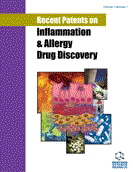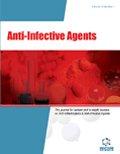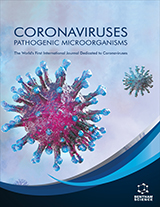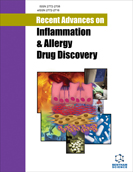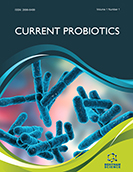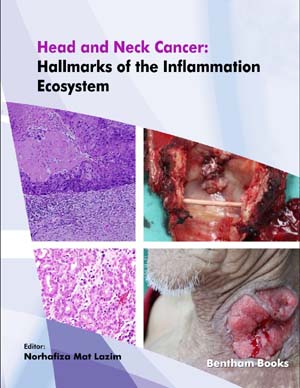Abstract
Several patents of methods for diagnostic work-up of IgE-mediated disease have recently been acclaimed. The aim of the present study was to assess the diagnostic usefulness of the Multiple allergen simultaneous testchemiluminescent assay® (MAST CLA) as compared to the Phadia Immunocap® (Phadia CAP) allergen-specific IgE test panel system. The design was a prospective, observational study in which MAST CLA and Phadia CAP test panels were assessed in 105 children aged 1 to 17 years (46 girls and 59 boys) with a suspected diagnosis of rhinoconjunctivitis, asthma, eczema or food allergy. The MAST CLA screening panel included 23 and 13, the Phadia CAP 10 inhalant and 6 food allergens. The MAST CLA screening panel found 353 sensitizations which were not detected by Phadia CAP, 93 (26.3%) of which were class 3 or 4 results. The sensitizations gave clinically useful information in 7 patients (6.6%). As compared to the Phadia CAP the MAST CLA screening test panel adds little to the diagnostic work-up of IgE mediated disease in children and adolescents.
Keywords: Allergy, allergic rhinitis, asthma, eczema, IgE, IgE tests, multiple allergen simultaneous test-chemiluminescent assay, Phadia CAP test, IgE panel screening tests, rhinoconjunctivitis
Recent Patents on Inflammation & Allergy Drug Discovery
Title:The Usefulness of the Multiple Allergen Simultaneous Test-Chemiluminescent as Compared to the Phadia Immunocap IgE Test Panel System in Children and Adolescents
Volume: 7 Issue: 1
Author(s): Ole D. Wolthers and Morten Staberg
Affiliation:
Keywords: Allergy, allergic rhinitis, asthma, eczema, IgE, IgE tests, multiple allergen simultaneous test-chemiluminescent assay, Phadia CAP test, IgE panel screening tests, rhinoconjunctivitis
Abstract: Several patents of methods for diagnostic work-up of IgE-mediated disease have recently been acclaimed. The aim of the present study was to assess the diagnostic usefulness of the Multiple allergen simultaneous testchemiluminescent assay® (MAST CLA) as compared to the Phadia Immunocap® (Phadia CAP) allergen-specific IgE test panel system. The design was a prospective, observational study in which MAST CLA and Phadia CAP test panels were assessed in 105 children aged 1 to 17 years (46 girls and 59 boys) with a suspected diagnosis of rhinoconjunctivitis, asthma, eczema or food allergy. The MAST CLA screening panel included 23 and 13, the Phadia CAP 10 inhalant and 6 food allergens. The MAST CLA screening panel found 353 sensitizations which were not detected by Phadia CAP, 93 (26.3%) of which were class 3 or 4 results. The sensitizations gave clinically useful information in 7 patients (6.6%). As compared to the Phadia CAP the MAST CLA screening test panel adds little to the diagnostic work-up of IgE mediated disease in children and adolescents.
Export Options
About this article
Cite this article as:
D. Wolthers Ole and Staberg Morten, The Usefulness of the Multiple Allergen Simultaneous Test-Chemiluminescent as Compared to the Phadia Immunocap IgE Test Panel System in Children and Adolescents, Recent Patents on Inflammation & Allergy Drug Discovery 2013; 7 (1) . https://dx.doi.org/10.2174/1872213X11307010096
| DOI https://dx.doi.org/10.2174/1872213X11307010096 |
Print ISSN 1872-213X |
| Publisher Name Bentham Science Publisher |
Online ISSN 2212-2710 |
 42
42Related Articles
-
The Neurovascular Unit: Focus on the Regulation of Arterial Smooth Muscle Cells
Current Neurovascular Research Peri-Procedural Care of Renal Nerve Ablation Candidates
Current Clinical Pharmacology Current Antiviral Therapy for Chronic Hepatitis C Including Liver Transplantation and Hepatic Resection
Current Medicinal Chemistry - Anti-Infective Agents HSP70 Family in the Renal Inflammatory Response
Inflammation & Allergy - Drug Targets (Discontinued) Preface
Current Enzyme Inhibition Possible Pathogenic Role of the Transmembrane Isoform of CD160 NK Lymphocyte Receptor in Paroxysmal Nocturnal Hemoglobinuria
Current Molecular Medicine Temporal Separation in the Release of Bioactive Molecules from a Moldable Calcium Sulfate Bone Graft Substitute
Current Drug Delivery ACKNOWLEDGEMENTS
Anti-Inflammatory & Anti-Allergy Agents in Medicinal Chemistry Elucidation of Possible Mechanism of Anti-Nociceptive and Anti-Oxidant Potential of Bauhinia tomentosa Extracts in Experimental Animal Models
The Natural Products Journal Regulation of Self-Reactive T Cells by Human Immunoglobulins- Implications for Multiple Sclerosis Therapy
Current Pharmaceutical Design Mapping and Annotating Obesity-Related Genes in Pig And Human Genomes
Protein & Peptide Letters Enzymatic regulation and functional relevance of NOX5
Current Pharmaceutical Design Mitochondria Associated Membranes (MAMs): Emerging Drug Targets for Diabetes
Current Medicinal Chemistry Role of Matrix Metalloproteinases in Degenerative Kidney Disorders
Current Medicinal Chemistry Myc - What We have Learned from Flies
Current Drug Targets New Medical Strategies for Midgut Carcinoids
Anti-Cancer Agents in Medicinal Chemistry Nef and TNFα are Coplayers that Favor HIV-1 Replication in Monocytic Cells and Primary Macrophages
Current HIV Research Foreign Compounds and Intermediary Metabolism: Sulfoxidation Bridges the Divide
Current Drug Metabolism Clinical Trials with Oncolytic Measles Virus: Current Status and Future Prospects
Current Cancer Drug Targets Drug-Induced Pulmonary Hypertension in Newborns: A Review.
Current Vascular Pharmacology


